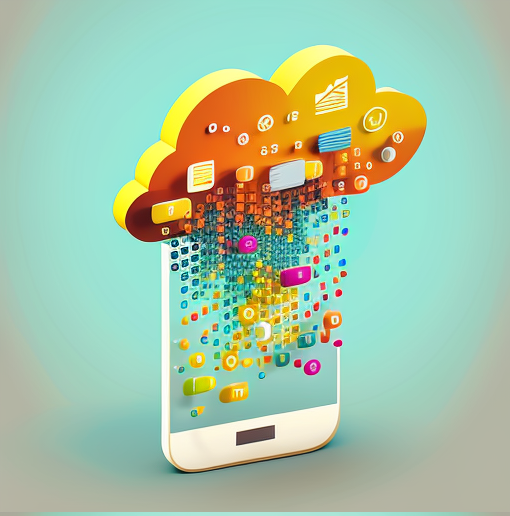In today’s rapidly evolving digital landscape, India stands at the cusp of a technological breakthrough that promises to reshape the way information is delivered to its citizens. The Department of Technology (DoT) is currently embarking on a groundbreaking feasibility study, exploring the potential of a spectrum band to offer broadcast services directly to users’ smartphones. This initiative, known as Direct to Mobile (D2M) technology, has the potential to redefine connectivity and information dissemination across the nation.
D2M: Bridging the Digital Divide
As the Government of India experiments with D2M technology, its primary goal is to enable users to download multimedia content directly to their mobile phones, even without an active internet connection. This native technology seeks to empower the government to communicate directly with citizens, combat misinformation, issue emergency alerts, and assist in disaster management. In a country with 1.2 billion mobile subscribers, of which approximately 750 million are smartphone users, the implications are profound.
The Growth of Smartphone Users in India
According to a recent Deloitte study, India’s smartphone user base is expected to witness remarkable growth, with a projected Compound Annual Growth Rate (CAGR) of 6 percent. By 2026, India is poised to reach a staggering 1 billion smartphone users. This exponential growth is attributed to the advent of 5G technology and its swift adoption, particularly in rural areas. The DoT recognizes the urgency of this shift and is diligently conducting a feasibility study to harness the potential of this transformative technology.
Collaborative Initiatives to Test D2M Technology
The innovative D2M technology isn’t merely a theoretical concept but a tangible solution in the making. In collaboration with Prasar Bharati, the public service broadcaster, the Indian Institute of Technology (IIT) Kanpur has initiated tests to assess the feasibility of implementing D2M technology. This collaboration showcases the commitment to advancing technological frontiers.
Decoding D2M Technology
To understand the essence of D2M technology, envision it as akin to FM radio. Within the device, a specialized receiver taps into specific radio frequencies, combining broadband and broadcast capabilities. Mobile phones equipped with D2M technology can capture territorial digital TV signals, enabling the seamless transmission of multimedia content directly to users’ phones.
Parag Naik, CEO of Saankhya Labs, emphasizes that D2M technology is a groundbreaking ‘Made in India’ innovation. Its potential to revolutionize content delivery, especially for video content, is immense. With D2M technology, consumers can access video content without the constraints of data plans, a game-changer in today’s mobile-centric world.
The Spectrum Band – 526-582 MHz
Crucial to the success of D2M technology is the designated spectrum band of 526-582 MHz. The Department of Technology has established a committee to study the viability of this band. Currently, it is utilized by Prasar Bharati for terrestrial TV broadcasting, with numerous transmitters operating within this band.
Empowering India’s Citizens
One of the primary drivers behind the government’s endorsement of D2M technology is its ability to disseminate citizen-centric information, even to those without internet access. The cable and Direct-To-Home (DTH) sectors are poised for transformation, as broadcasting directly to consumers’ homes eliminates intermediaries. Ministry of Information and Broadcasting (MIB) Secretary Apurva Chandra highlights the potential magnitude of this change.
Benefits for Businesses and Telcos
Beyond citizen-centric applications, D2M technology also offers significant advantages to businesses and telecommunications companies. It allows telcos and internet service providers to offload video traffic from mobile networks onto the broadcast network. This alleviates congestion in mobile spectrum, resulting in reduced call drops and increased data speeds. With India boasting 622 million active internet users, efficient spectrum management is paramount.
Enhanced Accessibility and Cost Savings
From a consumer perspective, D2M technology presents an opportunity for smartphone users to access multimedia content from Video on Demand (VoD) or Over The Top (OTT) platforms without depleting their mobile data. This is a promising development, especially considering the exponential growth projected for OTT users in India.
Empowering Rural India
With a significant portion of India’s population residing in rural areas with limited internet access, D2M technology offers a lifeline. It ensures that even in areas with poor connectivity, users can access video content, opening doors to education and vital information.
Educational and Agricultural Implications
D2M technology could also prove to be a boon for education in remote areas. Students would gain access to quality educational content, bridging the urban-rural educational divide. Moreover, farmers can receive real-time information on farming practices, weather forecasts, and crop planning.
Overcoming Challenges
Despite its promise, D2M technology faces several challenges. As it remains in its nascent stages, the government must navigate the complexities of bringing various stakeholders, including telecommunications companies, on board for its widespread adoption. This necessitates attractive propositions or policy reforms.
Furthermore, the infrastructural challenge of making D2M technology accessible across the entire country looms large. Ensuring equitable access in remote regions poses a considerable logistical challenge. However, the potential benefits of this technology are too substantial to be ignored.
Conclusion
In conclusion, Direct to Mobile (D2M) technology represents a groundbreaking stride towards a digitally inclusive India. With its potential to bridge the digital divide, empower businesses, enhance accessibility, and transform education and agriculture, D2M is poised to reshape India’s technological landscape. While challenges persist, the government’s commitment to harnessing this innovation is a testament to its dedication to ensuring a brighter digital future for all its citizens.










Leave a Reply